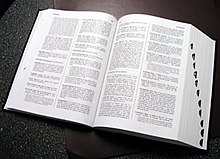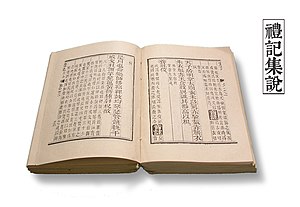Thumb index

A thumb index, also called a cut-in index,[1] is a round cut-out in the pages of dictionaries, encyclopedias, or other sectioned, often alphabetic, reference works like Bibles, used to locate entries starting at a particular letter or section. The individual notches are called thumb cuts.
References
- ^ "thumb index". Bookbinding and the Conservation of Books: A Dictionary of Descriptive Terminology. Foundation of the American Institute for Conservation. Retrieved 8 May 2012.

